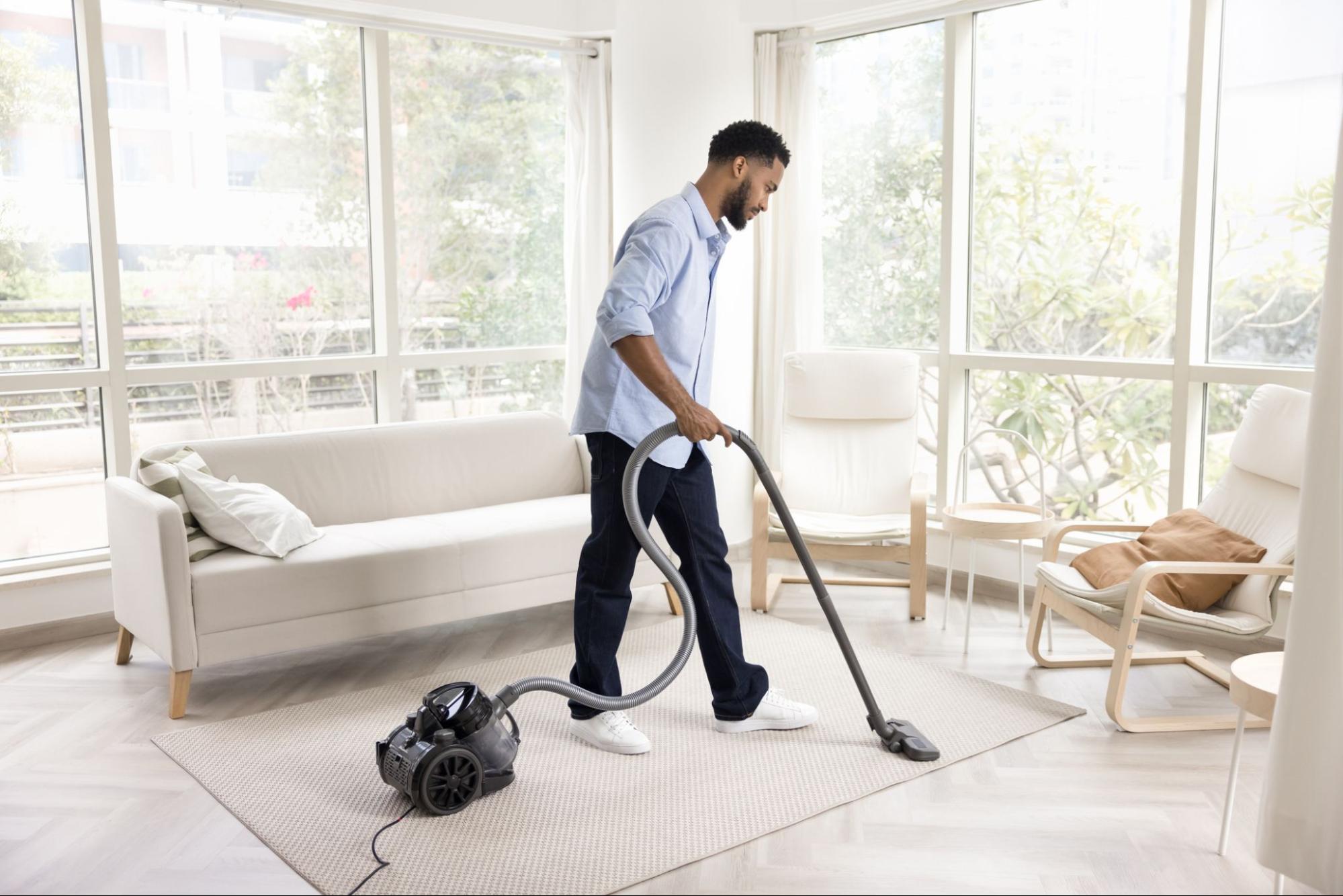
Approaching the challenge of creating a home environment that minimizes allergy triggers is less about a single, dramatic overhaul and more about implementing a granular, room-by-room strategy. The focus shifts from general tidiness to a deliberate campaign targeting the specific conditions and materials that harbor the most potent allergens—dust mites, pet dander, mold spores, and pollen. Effectively mitigating these persistent irritants requires acknowledging that each space in a dwelling presents its own unique set of vulnerabilities and demands tailored countermeasures. A blanket approach fails because the humidity profile of a bathroom is fundamentally different from the textile-heavy landscape of a bedroom, and the solution for one cannot simply be transposed to the other. This process of allergy-proofing becomes an exercise in applied environmental science, where success is measured by the consistent control of moisture, the strategic removal of dust-collecting materials, and the conscientious management of air quality, ultimately leading to a more tolerable indoor atmosphere for the sensitive individual.
a deliberate campaign targeting the specific conditions and materials that harbor the most potent allergens
The bedroom represents the single most crucial frontier in the battle against indoor allergies, primarily due to the ubiquitous presence of the dust mite. Considering that a significant portion of life is spent sleeping, addressing this space first yields the highest potential for symptom reduction. Dust mites thrive in warm, humid environments, finding their ideal habitat deep within mattresses, pillows, and bedding. Simply washing linens in cool water is insufficient; to be effective, wash all sheets, blankets, pillowcases and bedcovers in hot water that is at least 130 F (54.4 C) weekly, as this is the temperature required to kill the mites. Beyond the laundry routine, the single most impactful intervention is the complete encasement of mattresses and pillows in zippered, tightly woven, allergen-barrier covers. These specialized covers act as an impenetrable physical shield, trapping existing mites and their waste products inside, while simultaneously starving them of their primary food source: shed human skin flakes. Ignoring this fundamental step renders most other bedroom cleaning efforts largely ineffectual in the long term.
wash all sheets, blankets, pillowcases and bedcovers in hot water that is at least 130 F (54.4 C)
Moving beyond the core bedding area, a thorough evaluation of the bedroom’s furnishings and floor coverings must take place to minimize secondary dust reservoirs. Wall-to-wall carpeting, particularly high-pile varieties, acts as an extremely efficient trap for dust, dander, and other particulates, resisting the efforts of even the best vacuum cleaners. For those with severe sensitivities, remove carpeting and use hardwood or linoleum flooring and washable area rugs as a foundational change. Where carpet removal is not practical or feasible, weekly vacuuming must be performed with a machine equipped with a High-Efficiency Particulate Air (HEPA) filter to prevent the machine from simply recirculating fine allergens back into the air. Furthermore, the presence of heavy drapes, upholstered headboards, and excess decorative items like stuffed animals, knickknacks, and large piles of books all contribute significantly to the total dust load. Replacing heavy fabric drapes with smooth, washable roller-type shades or vertical blinds is a practical step that eliminates a major, often overlooked, collection point for airborne debris.
remove carpeting and use hardwood or linoleum flooring and washable area rugs
The bathroom introduces a completely different, yet equally challenging, allergen threat: moisture-loving mold. Due to the repeated presence of hot water, this room is highly susceptible to chronic dampness, creating the perfect conditions for mold and mildew proliferation on grout, shower curtains, and porous wall surfaces. The key to controlling this environment is relentless moisture management. Installing and consistently using a powerful exhaust fan to reduce moisture while taking baths or showers is non-negotiable, and this fan must vent directly to the outside, not merely into the attic space. After every use of the shower or bath, surfaces should be wiped down, and any visible condensation on walls or windows must be dried promptly. The use of washable bath mats, frequent laundering of shower curtains, and cleaning surfaces with a chlorine bleach solution or a dedicated mold-killing cleaner helps to eradicate spores before they become entrenched. The continuous effort to keep relative humidity below 50% here is crucial, often requiring the strategic use of a dehumidifier in basement or poorly ventilated bathrooms.
exhaust fan to reduce moisture while taking baths or showers
The kitchen, much like the bathroom, possesses areas of high moisture and also presents unique allergen opportunities related to food residues and potential pest activity. Mold often thrives in hidden locations, such as under sinks where minor leaks occur, within refrigerator drip pans, and inside the seals of poorly maintained appliances. Keep all rooms well ventilated by consistently using the exhaust hood while cooking, which not only removes cooking fumes and grease particles that can attract dust but also vents steam, further reducing the indoor humidity level. Immediate cleanup of food spills, storing food—including pet food—in sealed, airtight containers, and regularly cleaning trash and recycling bins denies mold and pests the organic material they require to flourish. The subtle presence of cockroach droppings, for instance, is a potent, often overlooked, allergen, making pest control an indirect but critical component of the kitchen’s allergy-proofing regimen.
Keep all rooms well ventilated
Addressing the living areas, including family rooms and connecting hallways, primarily revolves around managing two major airborne allergens: pet dander and tracked-in outdoor pollen. For pet owners, the dander, which is composed of microscopic flakes of skin shed by animals, is a persistent irritant that settles deep into fabric fibers. Keep indoor pets out of your child’s bedroom and ideally off upholstered furniture entirely to create strategic allergen-free zones within the home. Regular bathing of pets can help reduce the amount of dander released, but it will not eliminate the problem. In the living room, replacing fabric sofas and chairs with furnishings made of easily cleaned materials like leather, wood, or vinyl significantly reduces the surface area available for dander and dust collection. All washable fabric items, such as throw blankets and decorative pillow covers, should be laundered frequently in hot water, mirroring the protocol used for bedding in the bedroom.
Keep indoor pets out of your child’s bedroom
Controlling the ingress of outdoor allergens like pollen is a critical focus for living spaces, especially during high-pollen seasons. The single most effective strategy is a change in behavior: keep windows closed and rely on air conditioning to cool and dehumidify the air. Air conditioning units naturally filter the air, but their efficacy is greatly enhanced by using high-efficiency filters. For central HVAC systems, disposable filters with a Minimum Efficiency Reporting Value (MERV) rating of 11 to 13 are recommended to capture fine particles without severely restricting airflow. In homes without central air, or for targeted relief, strategically placed portable air cleaners with HEPA filtration can continuously clean the air in frequently used rooms. These devices are designed to remove 99.97% of particles down to 0.3 microns, making them highly effective against airborne pollen, mold spores, and fine dust.
portable air cleaners with HEPA filtration
The often-neglected utility spaces and transitional zones, such as basements, laundry rooms, and mudrooms, deserve unique attention due to their potential for high humidity and direct contact with the outdoors. Basements, in particular, are notorious for moisture issues that lead to mold growth. Any water leaks in walls or plumbing must be repaired immediately, and a dehumidifier must be run continuously to maintain that crucial indoor humidity level below 50%. In the laundry room, make sure your clothes dryer vents outside your home to prevent the hot, moist air from being released indoors. Furthermore, the practice of drying wet clothes inside the main living areas should be avoided, as it dramatically increases the ambient humidity. Mudrooms or entryways should be treated as decontamination zones, encouraging the removal of shoes and outer layers upon entry to prevent tracking in soil-bound allergens and pollen from outside.
make sure your clothes dryer vents outside your home
Finally, the maintenance tools and cleaning methods themselves must be scrutinized, as improper cleaning can inadvertently exacerbate allergy symptoms. Dry dusting or using a standard broom, for instance, simply launches fine particles back into the air, where they take hours to settle again. Instead, a shift to a damp or oiled mop or rag rather than dry ones to clean up dust is essential, as the moisture or oil traps the particles, removing them from the environment permanently. Vacuum cleaners must be fitted with HEPA filters, or better yet, a central vacuum system should be considered, which vents collected debris outside the main living envelope. For individuals with severe allergies, it is often best to have a non-allergic family member perform the cleaning, or if the allergic person must clean, they should wear a tight-fitting, high-efficiency particle mask and remain out of the newly vacuumed area for at least two hours to allow any disturbed particles to settle.
